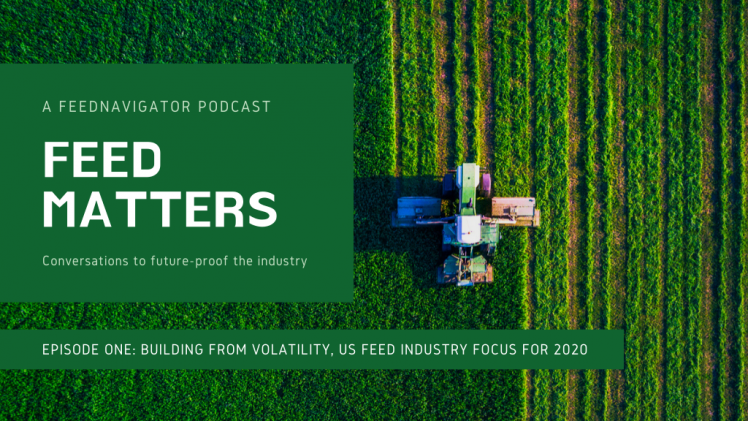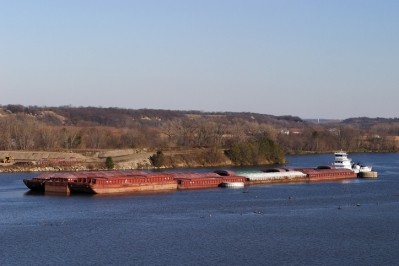Building from volatility, US feed industry focus for 2020

In terms of trade, the year is off to a positive start, given the partial ratification of the US-Mexico-Canada trade agreement USMCA by the US House of Representatives, said Randell Gordon, president of the National Grain and Feed Association (NGFA).
In the US, the deal still has to be passed by the Senate.
“There’s a strong hope that we can settle into some normalcy and predictability from our industry standpoint,” he told FeedNavigator.
In addition to improving access to international markets, there are regulatory topics that will be a focus throughout the year including how commodities are traded and work on gene editing regulation and biotechnology, he said. “In that arena, we’re focusing on the need for transparency so the industry, our customers on the food and feed side as well as in intentional markets, know what kinds of traits are being introduced into the commercial grain supply,” he added.
The feed industry also continues to deal with the concept of feed safety both from a biosecurity perspective and as part of the ongoing rollout of the Food Safety Modernization Act (FSMA), added David Fairfield, senior vice president of feed services, NGFA.
Improving trade
The passage of the USMCA would help solidify supply chain relationships in North America and provide a footing to start implementing the facets of the trade agreement, said Gordon.
The hope is that elements in the agreement relating to sanitary and phytosanitary provisions will allow for improved trade with both Canada and Mexico, he said.
Similarly, work on the phase one trade deal with China helps the sector have a more optimistic outlook for the year, even if the full details of the agreement have yet to be released, he added.
Feed markets and transport
The association has been working to address regulation surrounding the trade of commodities, said Gordon.
“We’ve been working with the Commodities Futures Trading Commission to bring some reforms and clarity to how they’re going to treat the hedging strategies that are used in agriculture and other sectors of the economy,” he said.
Both the feed and grain industries need to be able to hedge transactions, he added.
“There was a real risk that they were going to tighten the screws on all sectors of the economy to make some of the hedging strategies that agriculture has long used, very efficiently and without any kind of abuse, illegal,” he said. “We think they understood the dangers of that and how it would have made our market less competitive and how it would have made our farmers and agribusinesses less competitive and they’re now moving in a much better direction, we think.”
NGFA is also hoping to see progress on projects aimed at addressing the lock and inland waterway systems, Gordon said.
“Last year, the USDA commissioned a study that showed the benefit of the inland waterways to the agricultural community for various commodities [and,] more importantly, really quantified the economic damage that’s caused by delays of investment in the inland waterways – particularly along the upper Mississippi and Illinois waterways,” he added.
US ag secretary, Sonny Perdue, has been supportive of the effort and pushed for the completion of the study, Gordon said. “We’re hopeful that 2020 will be a good year for the waterways.”
Addressing feed safety and ASF
The majority of FSMA rules have been finalized, said Fairfield. However, the industry is still working to understand what those requirements mean.
The FDA has provided some guidance and worked to educate industry members, but some of the requirements involved in FSMA are quite complex – especially those pertaining to preventive controls and hazard analysis, he said. “Routine preventive control inspections just starting this fall and it’s really going to be through that inspection process that FDA’s regulatory expectations will be formalized,” he added.
“There’s a lot of flexibility within the requirements and so although FDA has given guidance and provided direction, there are still gray areas,” he said. “As an industry, we’ll learn, or we’ll know better what FDA’s compliance expectations are as we get more inspectional experiences specifically related to preventive controls – that’s going to be a big area for the industry.”
Another factor of feed safety concerning the industry currently has been the spread of African swine fever (ASF) and ways to prevent the disease entering the US, Fairfield said.
However, there also needs to be more research done to better understand feed's role in the spread of foreign animal diseases, he said. “We need to gain more information to be able to implement effective preventive measures for the US industry,” he added.
Following the results of preliminary and limited scope studies, some feed companies have started to voluntarily hold ingredients sourced from countries with and ASF concern, he said.
“At NGFA, we’ve tried to actively communicate the need to evaluate biosecurity practices and implement appropriate procedures to minimize the risk of transmitting viruses though people, through trucks, through equipment and through feed,” he said.













